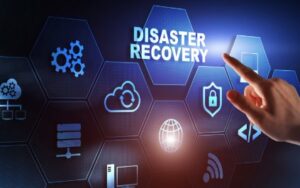6 Common disaster recovery myths every business should know
 Cyberattacks, system failures, and natural disasters have become a common occurrence, and they’re becoming increasingly more disruptive as businesses continue to digitize their operations. Having a disaster recovery plan is the best defense against these risks, but a shocking number of businesses are misinformed about what it takes to effectively recover from a disaster. Here are six myths about disaster recovery that every business should know.
Cyberattacks, system failures, and natural disasters have become a common occurrence, and they’re becoming increasingly more disruptive as businesses continue to digitize their operations. Having a disaster recovery plan is the best defense against these risks, but a shocking number of businesses are misinformed about what it takes to effectively recover from a disaster. Here are six myths about disaster recovery that every business should know.
Myth 1: Disaster recovery is only necessary for large corporations
News outlets often report on major disruptions and disasters that impact big corporations because they make for great headlines. After all, corporations that are typically presumed to have several safeguards falling victim to disasters is a gripping story.
However, this has led to the misconception that only large corporations need disaster recovery plans. Cyberattacks, technical issues, and natural disasters affect businesses of all sizes, and no organization is immune to the potential damages. Whether it’s a small business with limited resources or a large corporation with an extensive IT infrastructure, having a disaster recovery plan in place is essential for keeping operations running smoothly.
Myth 2: Data backups are all you need for disaster recovery
Despite being a crucial component of disaster recovery, data backups are not sufficient on their own. A comprehensive disaster recovery plan encompasses backup solutions along with other critical elements such as disaster response protocols, alternate infrastructure options, and communication strategies. Companies with mission-critical systems may even need to set up a secondary worksite to ensure business continuity in the event of a disaster. Without a well-rounded plan in place, businesses risk losing valuable time and resources trying to piece together a recovery strategy in the midst of a disaster.
Myth 3: Disaster recovery is expensive and complex
While implementing a robust disaster recovery plan requires investment, it is not inherently prohibitively expensive or overly complex. Cloud-based data backups and disaster recovery solutions from managed IT services providers have made it more affordable and manageable for businesses of all sizes to have a comprehensive disaster recovery plan in place. Plus, the cost of a disaster recovery plan is significantly lower than the potential losses a business could face in the event of a disaster.
Myth 4: Only IT departments are responsible for disaster recovery
Disaster recovery planning should involve the entire organization, not just the IT department. While the IT team plays a critical role in implementing and maintaining disaster recovery solutions, it is essential for all employees to understand their responsibilities in case of a disaster. Business continuity planning should involve cross-departmental collaboration, awareness training for employees, and clear communication protocols during emergencies.
Myth 5: Achieving zero downtime and data loss is always feasible for disaster recovery
Although zero downtime and zero data loss are ideal scenarios for disaster recovery, they may not always be practical or achievable for every business. The cost and complexity of implementing such high levels of resilience can be prohibitive for many organizations.
Instead, businesses should establish realistic recovery objectives based on their specific needs and prioritize the most critical systems and data for recovery. Less critical systems and data may have a longer recovery timeframe, but as long as the most vital functions are restored quickly, the business can continue to operate.
Myth 6: Disaster recovery planning is a one-time task
Disaster recovery planning isn’t something that can be checked off a to-do list and forgotten about. Business environments evolve, new threats emerge, and technology advances, making it crucial to revisit and revise the recovery plan periodically. Conducting regular assessments, testing procedures, and incorporating lessons learned from simulations or real incidents are essential for maintaining an effective disaster recovery strategy.
If you want a truly effective disaster recovery plan that’s not based on myths and misconceptions but rather on hard data, contact us today. We provide comprehensive disaster recovery planning and solutions that can help your business mitigate risks, reduce downtime, and ensure minimal loss in case of a disaster.

